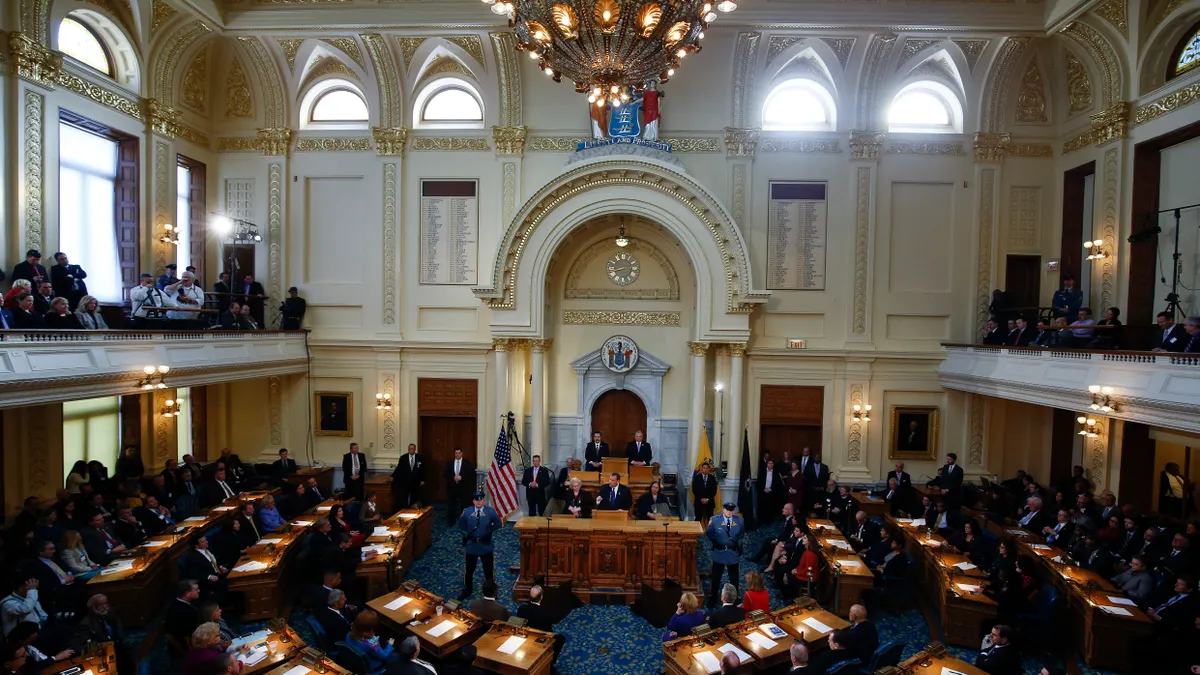For some executives, Baltimore’s Francis Scott Key Bridge collapse reawakened grim memories of the pandemic-era shocks that led to snarled supply chains and soaring shipping costs. For CFOs who got that wakeup call, experts say there are a number of steps they can take to keep their transport costs under control.
When it comes to supply chain management, there are a variety of tactics executives can deploy to smooth transportation budgets and be prepared for the next cycle — or crisis. Craig Russell, a logistics and distribution advisor with Big Four accounting and consulting firm KPMG, suggests finance chiefs need to take a “control tower” approach; asserting that they should be actively involved so that they can know where and when adjustments are needed in order to manage their costs when circumstances change.
“The ones who have remained flexible and agile have been able to take on different types of transportation contracting and costing mechanisms,” he said.
Price creep amid resiliency
For now, executives who pay to ship goods are enjoying some tailwinds despite the alarming headlines around the events in Baltimore as well as spiking ocean shipping rates amid attacks on ships in the Red Sea. Indeed, while the bridge collapse led to delays, congestion and logistical challenges, supply chains showed their resiliency with transportation modes absorbing pressures, Industry Dive sister publication Supply Chain Dive reported.
Generally, shipping prices have eased considerably since 2021, according to Ashutosh Dekhne, the supply chain and operations practice leader at Big Four accounting and consulting firm Ernst & Young. However, prices are starting to climb, he noted.
Josh Allen, chief commercial officer with ITS Logistics which provides fulfillment services, confirmed shippers are planning price increases this year and beyond.
“You will see incremental gains in price, but I don’t think it will be a hockey stick,” he said. With this in mind, he said CFOs need to be thinking not just about 2024, but 2025 and even 2026.
Goldilocks scenario
When it comes to choosing what or how many carriers companies should partner with, some experts suggest a kind of happy medium or Goldilocks scenario.
Philip Schmidbauer, senior director of analytics and solutions with ODW Logistics, advised CFOs not to spread themselves too thin, nor should they put all their eggs in one basket. Having different carrier options means CFOs can leverage competition,but whoever the carrier is, he recommended the firm should be one that actively consults with their customer, versus someone who books orders mindlessly.
Work with the people who will be consultative and who will help you drive costs and waste out of your supply chain, he said.
Finance leaders also need to be aware that transportation is only one component of shipping costs, he warned For instance, the goods also need to be stored somewhere while awaiting shipment or arriving at their destination. Those warehousing costs, which have been growing, can quickly add up.
“Warehouse and inventory are two separate levers CFOs can pull,” Schmidbauer said of how CFOs can manage costs in this area.
Timing is key
CFOs can also control costs through smart contract negotiations. Allen from ITS recommended CFOs establish long-term contracts now to lock in the comparatively lower rates before they increase further. He said this is to the benefit of both the CFO, who can hedge against price volatility, as well as providers, who know they’ll have income for the contract term.
“So it’s a win-win for the providers and for CFOs that are running these businesses,” he said.
Dekhne, from E&Y, also talked about the benefit of using long-term contracts, but, like Schmidbauer, cautioned against looking at just one top-line price. An ocean freight bill, for example, might have the contracted transportation cost, but also include 14 to 15 line items.
“Most companies look at the top line and think it takes this much to go from A to B,” he said. Extra costs on top of that such as fuel or other additional surcharges — such as where items are picked up and dropped off, or issues with special equipment — can add significantly to transport costs. In total, such extra costs can comprise 15%-30% of base line haul transport costs, Dekhne said.
Understand the big picture
When one negotiates a contract, shipping customers need to know where they fit into the system. “If companies with smaller transport spend decide to go into the bidding cycle with carriers at the same time as the other large shippers do their bidding cycles (typically, early-mid summer), the carriers get consumed with attending to large shippers and will generally not provide the best/most aggressive bids to the smaller shippers,” Dekhne said in an email response to questions.
Then too ODW’s Schmidbauer, also cautioned CFOs against going too far in their contract negotiations, saying relationships matter in the long run. If someone locks in a low rate now, once the contract expires that company might not want to work with them anymore. Conversely, a CFO with a longstanding relationship might not get the lowest rate ever, but the shipper might be more willing to be flexible when times are tough.
“I’d say there are certain games you can play, but if you play stupid games you can win stupid prizes. … So be cautious in your cost-cutting adventures,” Schmidbauer said.




















